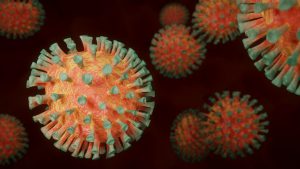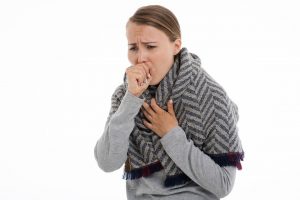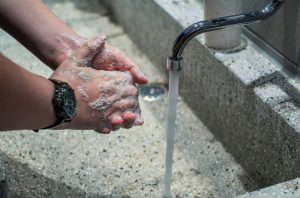There are different ways that diseases can be transmitted between people. Some can travel through the air and can infect anyone who breathes it in. These diseases are called airborne diseases. Airborne diseases are spread when an infected person coughs, sneezes, or even talks. Spit and bacteria fly in the air and can linger, and some can land on people or surfaces. These types of diseases are very hard to control because of how far they can travel and how long they can stay on surfaces. Learning about airborne diseases and their symptoms can help you prevent infection, and can help you know when to seek medical attention.
Different Airborne Diseases
Many diseases are spread through the air, or by touching the surfaces that germs land on. Some of the most well-known airborne diseases are:
- COVID-19
COVID-19 is a new or “novel” coronavirus that has spread rapidly throughout the world. According to scientists, the disease is spread through secretions from the throat and nose when someone spits or coughs. The virus can last on surfaces for days and is extremely contagious.
- Influenza
The flu is contagious and spreads easily in the air. As with COVID-19, a person can be a carrier of the flu before they even experience symptoms. There are many strains of the flu that are constantly changing, making it hard for the body to develop immunities. Because of this many people lose their life to the disease each year
- Mumps
The mumps are another highly contagious disease. This viral disease can be spread long before a person experiences symptoms, and for up to 5 days after they are clear of symptoms. Vaccination against the disease has helped lower the number of fatalities and the number of people who come down with it.
- Chickenpox
Chickenpox can be spread a day or two before the tell-tale rash appears. After being exposed to the virus, it takes up to 21 days for chickenpox to develop. Normally you only get chickenpox once in your life, and then it goes dormant. However, after a long period of time, it can reactivate into a skin condition called shingles.
- Whooping Cough (Pertussis)
This respiratory disease is very contagious for about 2 weeks after coughing starts. The airways swell, which can result in death. This illness is particularly dangerous for babies, so it is important that anyone coming in contact with newborns be vaccinated against it.
- Measles
Measles can remain in the air and on surfaces for up to 2 hours. A person can transmit this contagious disease for up to 4 days before and 4 days after the measles rash occurs. It is one of the leading causes of death in young children, so it is important that all children get vaccinated against it.
Symptoms
As mentioned, some airborne diseases are extremely contagious and can be deadly. Symptoms to look out for include:
- Shortness of breath

One of the symptoms of an airborne disease is coughing. - Fatigue
- Fever
- Coughing
- Sneezing
- Congestion
- Sore throat
- Body aches
- Loss of appetite
- Swollen glands
Some other symptoms to look out for, especially with ones that cause skin conditions such as chickenpox, measles, and mumps are:
- Itchy rash on chest, face and back
- Blisters on face and neck
Prevention
The population most at risk of dying or having extreme complications from airborne diseases are the very young, older adults, and people with compromised immune systems. There are a few precautionary steps you can take to protect yourself and others from airborne diseases. It is impossible to completely avoid them because they are in the air, but some things you can do include:

- Keep your distance from people with symptoms
- Wash your hands for at least 20 seconds regularly, especially after sneezing or coughing
- Cover your mouth with a tissue or your elbow when sneezing or coughing.
- Try to stay home when you are sick if possible.
- Wear a face mask to prevent spreading germs or breathing them in.
- Avoid touching your face, or putting your fingers in your mouth.
- Regularly clean surfaces in your house
- Get vaccinated
Airborne diseases can linger in the air for a while, and some can last on surfaces for days, but there are ways to help avoid them or alleviate the symptoms if you do get them. If you are not in a high-risk group, you can typically manage one of these viruses with over-the-counter medication such as acetaminophen. Whatever risk group you are in, know the symptoms, try to get tested if you suspect you have been exposed to a virus, and always practice good hygiene. It is also important to get vaccinated if at all possible: vaccinations for diseases like the flu can help reduce the symptoms severity by at least 50%, or prevent the disease altogether. Stay healthy and stay safe to prevent getting sick or infecting others.
